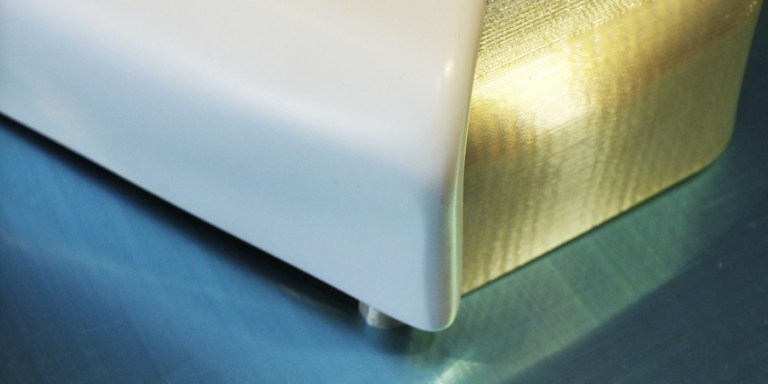Additive layer manufacturing (ALM), or 3D printing as it is often referred to, can be used to manufacture both engineered and cosmetic aircraft parts, from ducting, vents and electrical housings, to trims, TV surrounds and even espresso machines.
But although it’s on people’s radar, when it comes to manufacturing aircraft interior parts, ALM is still not very common. There are two reasons for this: firstly, not many people understand it; and secondly, not many people have the know-how or technical capability to do it.
Let’s address the first point by quickly looking at what ALM is. Put simply, it’s a process by which a 3D object is grown from literally nothing by continually building or fusing a material layer on layer, physically forming the part originally created digitally in a 3D CAD design package.
So what are the benefits of ALM? Aircraft interior parts – be they engineered or cosmetic – can be complex in design. Using ALM gives designers the freedom to create intricate 3D complex assemblies with fewer parts that would simply not be possible to manufacture using traditional methods due to tooling design limitations. Plus, using ALM rather than injection mold tooling saves thousands of pounds.
With a lead time of just one week from design to finished part. ALM can produce finished parts 80% quicker than traditional manufacturing techniques, typically reducing costs by 70%. This is particularly useful when it comes to maintenance, repair and overhaul (MRO) as a part can literally be printed on demand, thereby removing the need for companies to keep huge stock-piles of parts.
Lastly, ALM can also produce low production volume parts that typically weigh considerably less than their traditionally produced counterparts. For aerospace this is big news as 1kg of weight saved equates to major fuel savings over the course of a year.
Now we come on to the second reason for why ALM is still not very common when it comes to aircraft interiors: a lack of know-how or technical capability to embed the knowledge required with the associated systems inside the current aircraft supply chain.
I’m not one to boast, but FDM Digital is the UK’s leading contract additive manufacturing provider with the largest commercially available 3D printing capacity in the UK, combined with the largest build envelopes on the FDM process. We have nine Stratasys machines and an HP Multi Jet Fusion machine (the only one in the UK commercially available, specifically targeting the aerospace, automotive and F1 sectors). Ten times faster and cheaper to run than any other 3D printer, it’s an industry game changer. It can produce hundreds of parts in a set build time, which gives it a mind blowing volumetric build envelope advantage over any other 3D printer on the market today. Plus, we are the only ALM company in the UK who can also finish aircraft interior parts to the relevant AIC paint codes and specifications.
We’ve produced tens of thousands of flight-ready components, manufactured to AS9100, using Sabic’s ULTEM 9085 FDM material, which can withstand the needs of the aircraft market. From non-load bearing components, ducting parts and TV surrounds to trims and electrical housings – you name it, we’ve done it.
Our most recent venture is an espresso machine by Aerolux – a key manufacturer of quality galley equipment to the world’s major commercial airlines. Aerolux launched this new espresso machine at Aircraft Interiors Expo in Hamburg this April. Aerolux, which has been in the aircraft interiors business for more than 25 years, approached us because the original design for the machine had a complicated aluminum frame. Because ALM lends itself to printing on demand and is ideal for printing complex parts, we were able to manufacture the machine and provide a painted finish far quicker and at a lower cost compared with the aluminum option.
Indeed, Aerolux’s design engineer, Oliver Sharples, recently said to me that we produced the complex parts for their new espresso machine faster and cheaper than any of his earlier designs, plus we knew a thing or two in regards to finishing.
So, although still not very common in the world of aircraft interiors, ALM can be used to manufacture both engineered and cosmetic parts for a variety of aircraft. The potential is huge – aircraft interior manufacturers just need to take a bit of time to understand it and find a company with the right technical capability and know-how to work with.





